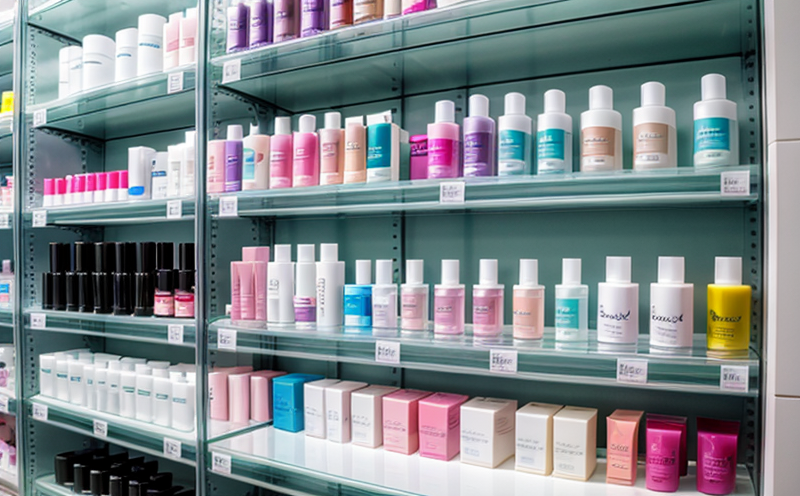Shelf Life Risk Assessment in Cosmetics
Understanding and predicting the shelf life of cosmetic formulations is crucial in ensuring product safety and quality. Shelf life risk assessment involves a series of tests designed to evaluate how long a cosmetic formulation can be stored under specified conditions without compromising its efficacy, stability, or safety. This service ensures that products meet regulatory requirements while maintaining consumer trust.
The shelf life of a cosmetic product is influenced by various factors including the chemical composition, packaging materials, storage temperature, humidity levels, and exposure to light. These variables can lead to degradation processes such as oxidation, hydrolysis, microbial growth, or changes in color and texture. By conducting thorough shelf life risk assessments, manufacturers can identify potential issues early on and implement necessary countermeasures.
For instance, if a cosmetic contains water-soluble ingredients like vitamins or antioxidants, it may be susceptible to microbial contamination over time when exposed to high humidity environments. On the other hand, products containing oils might face oxidation problems at elevated temperatures. Thus, understanding these factors is essential for accurate shelf life determination.
A well-structured shelf life risk assessment typically includes several key steps:
- Product formulation analysis
- Environmental conditions simulation
- Stability testing under accelerated conditions
- Physical and chemical property monitoring
- Microbiological evaluation (if applicable)
- Consumer use experience replication
During the process, samples are subjected to controlled environments that mimic real-world storage scenarios. This allows for observation of any changes occurring within the product over time. Additionally, advanced analytical techniques such as high-performance liquid chromatography (HPLC), Fourier transform infrared spectroscopy (FTIR), and gas chromatography mass spectrometry (GC-MS) are employed to measure specific parameters indicative of product integrity.
It's important to note that while accelerated aging methods can provide insights into long-term behavior, they should not replace actual storage tests. Real-world conditions will always have unique variables which cannot be fully captured through controlled experiments alone. Therefore, combining both approaches offers the most comprehensive evaluation possible.
Applied Standards
| Standard | Description |
|---|---|
| ISO 6728:2014 | Determination of pH value of cosmetic products - Particular attention to liquid and semi-solid products. |
| ASTM D5396-20 | Standard test method for determining the stability of biodegradable plastic materials in soil environments using accelerated protocols. |
Quality and Reliability Assurance
The quality assurance process involves rigorous validation procedures to ensure that all shelf life assessments conducted meet industry standards. This includes calibration of laboratory equipment, adherence to Good Laboratory Practices (GLP), and continuous training for personnel involved in testing.
To maintain reliability, we follow strict protocols throughout the entire assessment cycle from sample preparation through final reporting. Our experienced scientists employ cutting-edge technology supported by robust quality control measures to deliver precise results every time.
Environmental and Sustainability Contributions
- Evaluating eco-friendly packaging options that extend shelf life without compromising product efficacy.
- Reducing waste by optimizing the storage conditions to minimize spoilage rates.
- Promoting sustainable practices through lifecycle analysis of ingredients used in formulations.
- Supporting circular economy principles by reusing or recycling unused samples during testing processes.





